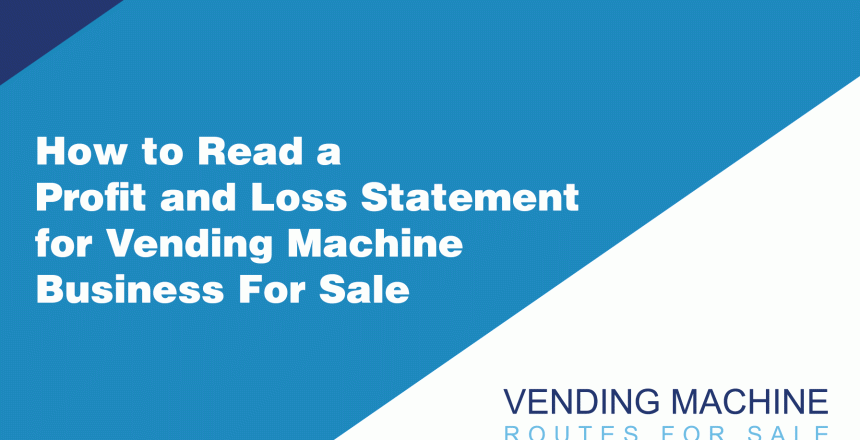For entrepreneurs interested in vending machine routes for sale or exploring vending machine businesses for sale, understanding how to read a Profit and Loss (P&L) statement is crucial. A P&L statement, also known as an income statement, provides a clear picture of a vending machine business’s financial performance over a specific period. This guide simplifies the process of interpreting a P&L statement, tailored specifically for vending machine businesses, a sector rich in opportunities as seen on platforms like VendingMachineRoutesForSale.com.
Understanding the Structure
1. Revenue
- What It Is: This is the total income generated from the vending machine business. It’s a crucial figure, especially when evaluating vending machine routes for sale.
- Key Components:
- Sales from Vending Machines: Total income from the sale of products in the vending machines.
- Other Income: Any additional income, such as commissions or lease space for machines.
2. Cost of Goods Sold (COGS)
- What It Is: COGS for a vending machine business includes the direct costs of goods stocked in the vending machines.
- Key Components:
- Inventory Costs: The cost of items that are sold through the vending machines.
- Delivery and Restocking Costs: Expenses related to transporting and restocking the vending machines.
3. Gross Profit
- How to Calculate: Gross Profit = Total Revenue – COGS.
- What It Indicates: This figure shows the profit made from the vending machines after accounting for the cost of inventory.
4. Operating Expenses
- What They Are: These are the expenses incurred in the operation of the vending machine business.
- Key Components:
- Machine Maintenance and Repairs: Costs associated with maintaining and repairing vending machines.
- Rent or Lease Expenses: If applicable, the cost of renting space for placing vending machines.
5. Operating Profit
- How to Calculate: Operating Profit = Gross Profit – Operating Expenses.
- What It Indicates: This figure reflects the profit generated from the core vending machine operations.
6. Net Profit
- How to Calculate: Net Profit = Operating Profit – Additional Expenses (such as taxes, loan interests).
- What It Indicates: This is the bottom line, showing the actual profit after all expenses.
7. Analyzing the P&L Statement for Vending Machine Businesses
- Revenue Trends: Look for trends in machine sales to identify popular locations or products.
- Cost Management: Evaluate if the costs of goods and operation are in line with industry standards.
- Profit Margins: Assess the gross, operating, and net profit margins to gauge overall business efficiency.
- Expense Analysis: Identify areas where expenses can be optimized for better profitability.
Conclusion
A P&L statement is a fundamental tool for anyone looking into vending machine businesses for sale or evaluating vending machine routes for sale. It offers valuable insights into the financial health and operational efficiency of a vending machine business. By understanding each component of the P&L statement, entrepreneurs can make more informed decisions, ensuring they invest in profitable ventures, as found on platforms like VendingMachineRoutesForSale.com. Whether you’re a seasoned business owner or new to the vending industry, mastering the art of reading a P&L statement is an invaluable skill in navigating the financial landscape of vending machine businesses.
